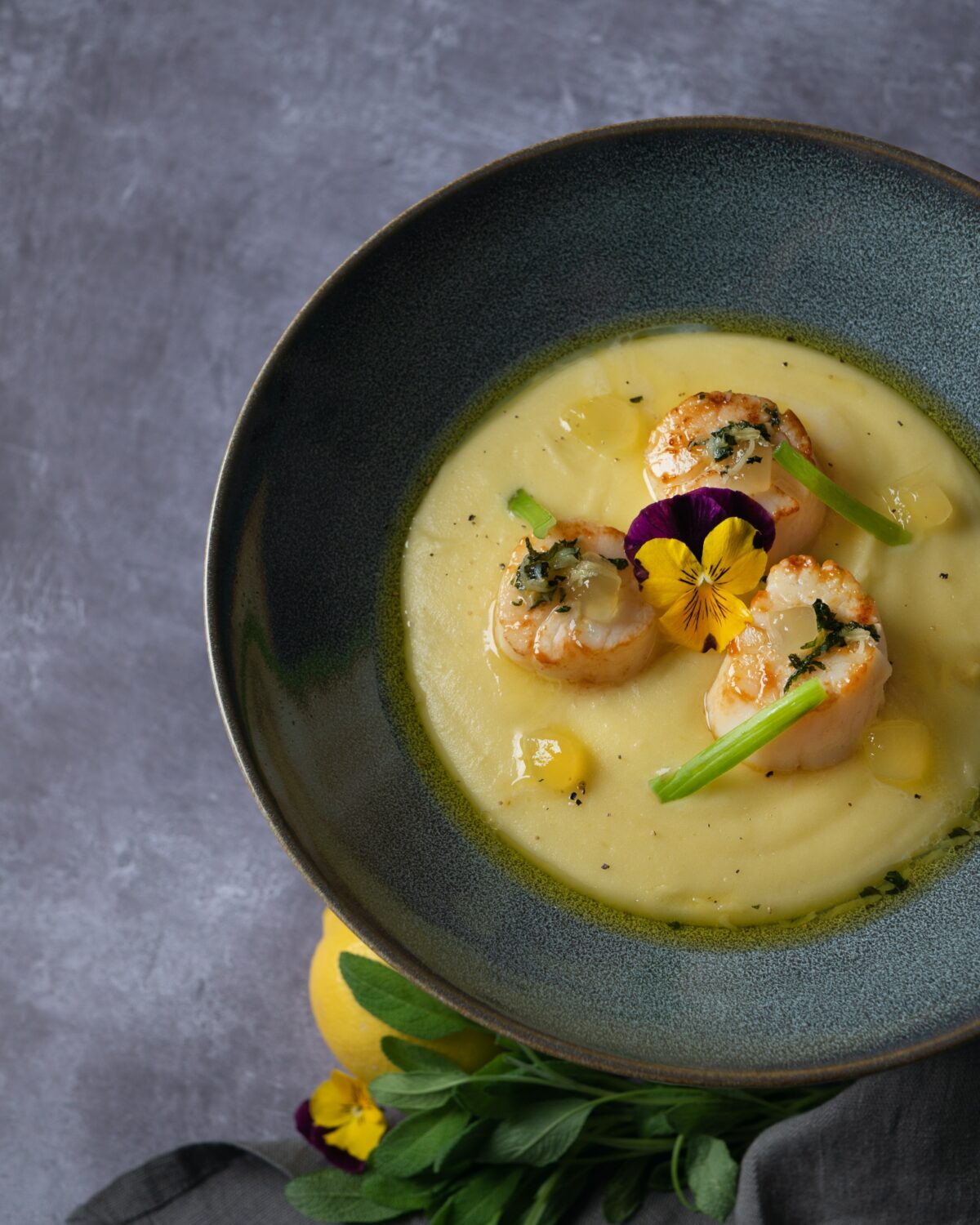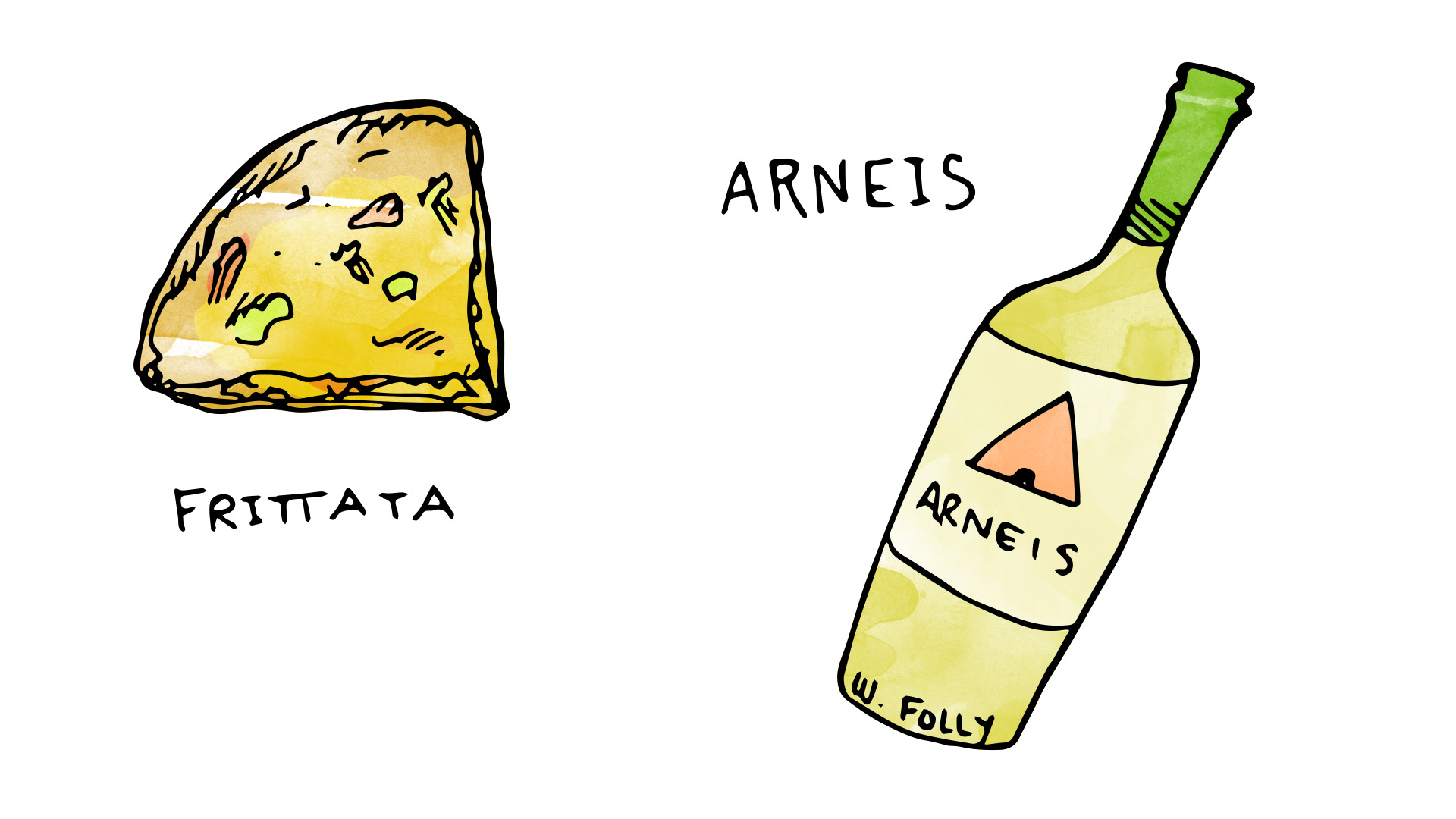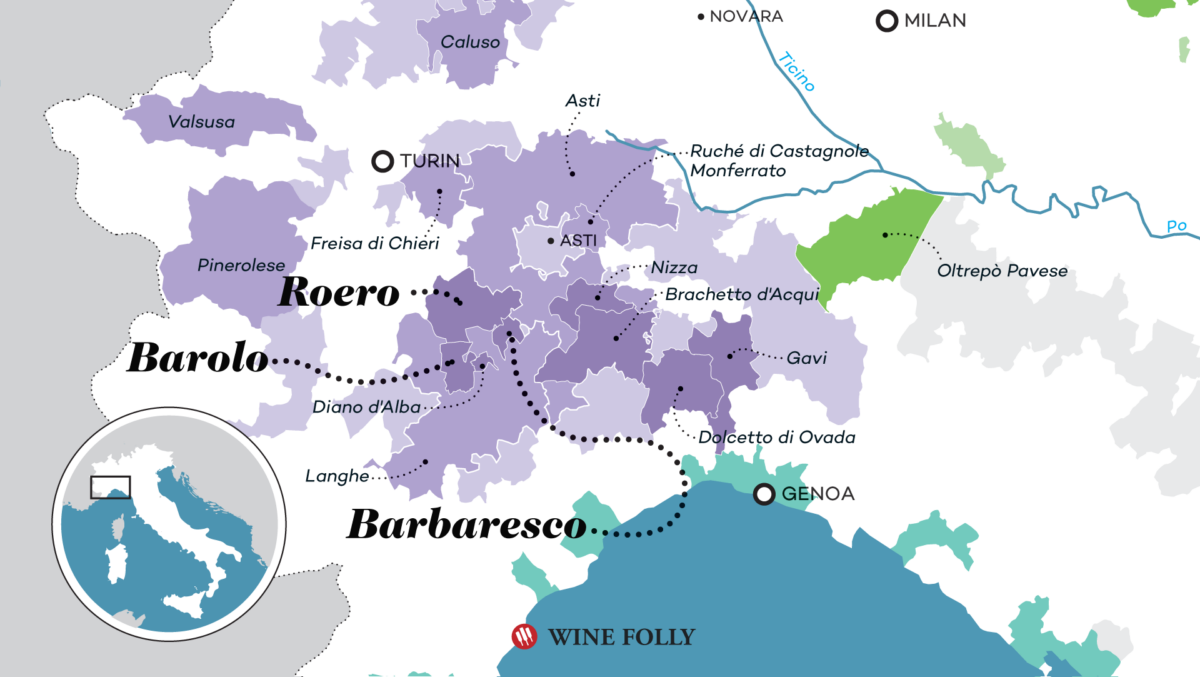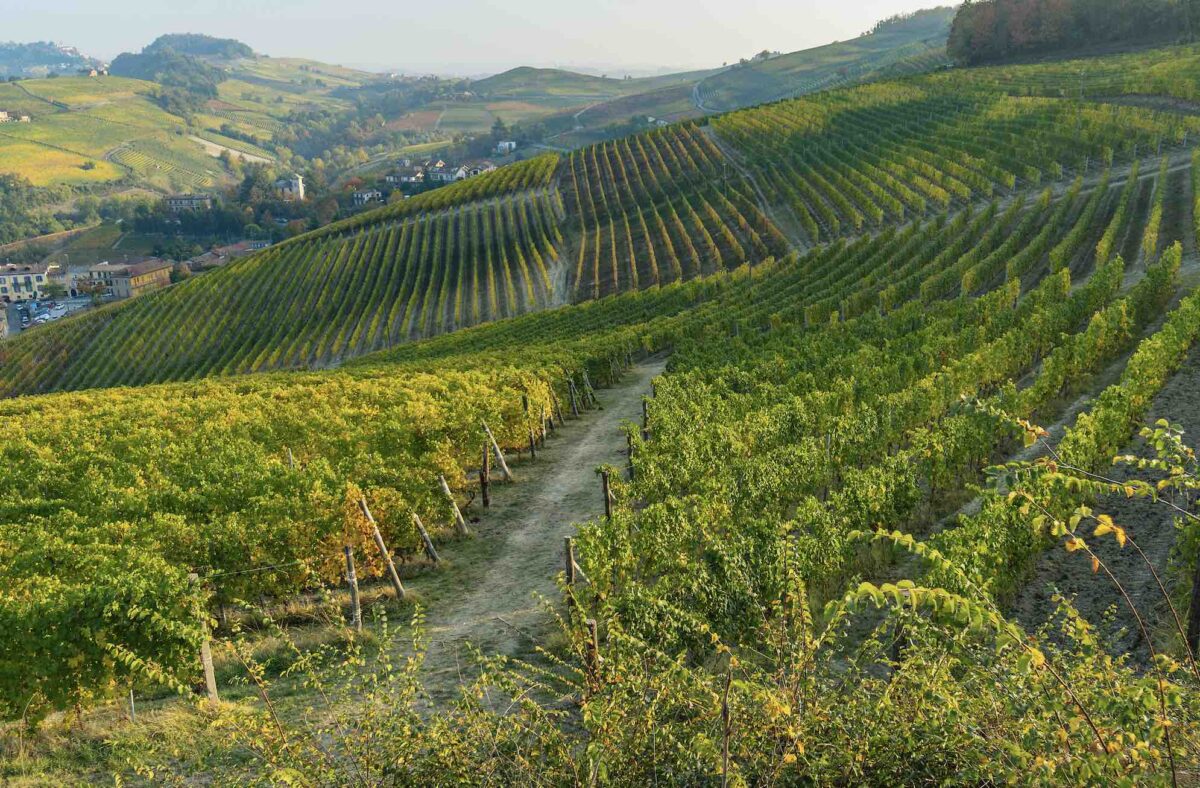Also known as: Bianchetta, Nebbiolo Bianco
Table of Contents
Primary Flavors
- Peach
- Yellow Apple
- Honey
- Raw Almond
- Nutmeg
Taste Profile
On the nose, Arneis is an aromatic wine, brimming with the fragrances of pear, apricot, white flowers, chamomile, and almond.
On the palate, Arneis is typically medium-bodied, displaying a rounded and somewhat waxy mouthfeel. If you enjoy Pinot Gris, you’ll likely find Arneis equally intriguing. Its acidity is moderate, unlike many other white Italian grape varieties. And even though its aromatic bouquet might suggest a sweeter profile, Arneis is traditionally crafted as a dry wine.
How to Serve Arneis Wine
Serve Arneis slightly chilled in a white wine glass. There’s no need for decanting as its aromatic profile is naturally expressive. A white wine glass, with its narrower opening, will channel the abundance of captivating scents straight to your senses.
Most Arneis is best consumed within a few years of buying, as the aromatic quality of the wine is what makes it most interesting, and this can fade with time.

SERVE
45–55°F / 7-12°C
GLASS TYPE
White
DECANT
No
CELLAR
0-3 Years
Arneis Food Pairing
Arneis pairs beautifully with light proteins and dishes that incorporate elements like roasted fruits, nuts, citrus, or fragrant herbs like sage or thyme, which complement its aromatic character.
Consider seared scallops with a citrus-infused butter sauce, garnished with toasted almonds. The citrus and almond in the meal will uplift the fruity and nutty notes within the wine.
Alternatively, try roasted chicken with a pear and thyme stuffing, served alongside a creamy risotto. The herbal and fruity components of the dish will enhance the fruit-forward and rounded characteristics of the Arneis.

5 Fun Facts About Arneis
- Arneis is native to the Piemonte region of Northwestern Italy, specifically in the Roero hills.
- The majority of the world’s Arneis grows in Italy, although it has started to gain popularity in other wine regions like California and Australia.
- The name ‘Arneis’ translates to ‘little rascal’ in the local Piemontese dialect, referring to the difficulties encountered when growing this particular grape variety.
- Arneis was traditionally blended with Nebbiolo to soften the tannins and add some aromatic complexity to the latter. Today, it’s mostly enjoyed as a single varietal wine.
- Despite being nearly extinct in the 1970s, Arneis has made a remarkable comeback.

Where it Grows
There are fewer than 3,000 acres of Arneis in the world, making it one of the world’s rarer grapes. It’s primarily found in Italy, although some are experimenting with plantings in New Zealand and Australia. In Italy, it is mostly found in Piemonte, specifically in the Roero region.
- Italy: 2,718 acres (1,108 hectares)
- Australia: 91 acres (37 hectares)
- New Zealand: 82 acres (33 hectares)
Total Vineyard Area – 2,913 acres (1,179 hectares) (Source: University of Adelaide, 2021)

Piemonte, Italy
What to expect: In Piemonte, expect flavors spanning from crisp pear and apple in cooler microclimates to richer expressions of apricot, almond, and white flowers in the warmer areas. Aging in oak may introduce subtle hints of vanilla, while the grape’s inherent richness provides a slightly waxy and rounded mouthfeel.
Roero DOCG: Located north of Barolo and south of Turin, Roero is famed for crafting distinctive, aromatic Arneis with a characteristic mineral undertone, owed to its sandy soils. The region’s climate and minimal oak influence bring forth bright and fresh notes of citrus, pear, and white peach. Hints of chamomile and almond are also not uncommon, adding to the complexity and charm of Roero Arneis.

In-Depth Knowledge
Take a deep dive into better understanding Arneis.
Back from the Brink
Arneis is an ancient white grape variety native to Piemonte, Italy, with written references dating back to the 15th century. Despite its rich history, it faced the brink of extinction in the 1960s and 1970s, relegated to the sidelines as Piemonte’s red wines, such as Barolo and Barbaresco, took center stage.
Because it is difficult to grow and tends to oxidize easily if not made in a temperature-controlled manner, many grape growers abandoned it.
Its savior came in the form of visionary winemakers like Alfredo Currado of Vietti and Bruno Giacosa. Recognizing the unique qualities of the grape, they took a risk and invested in reviving it, introducing it as a standalone varietal. This marked a significant shift in its fate, leading to its renaissance in the Roero region.
